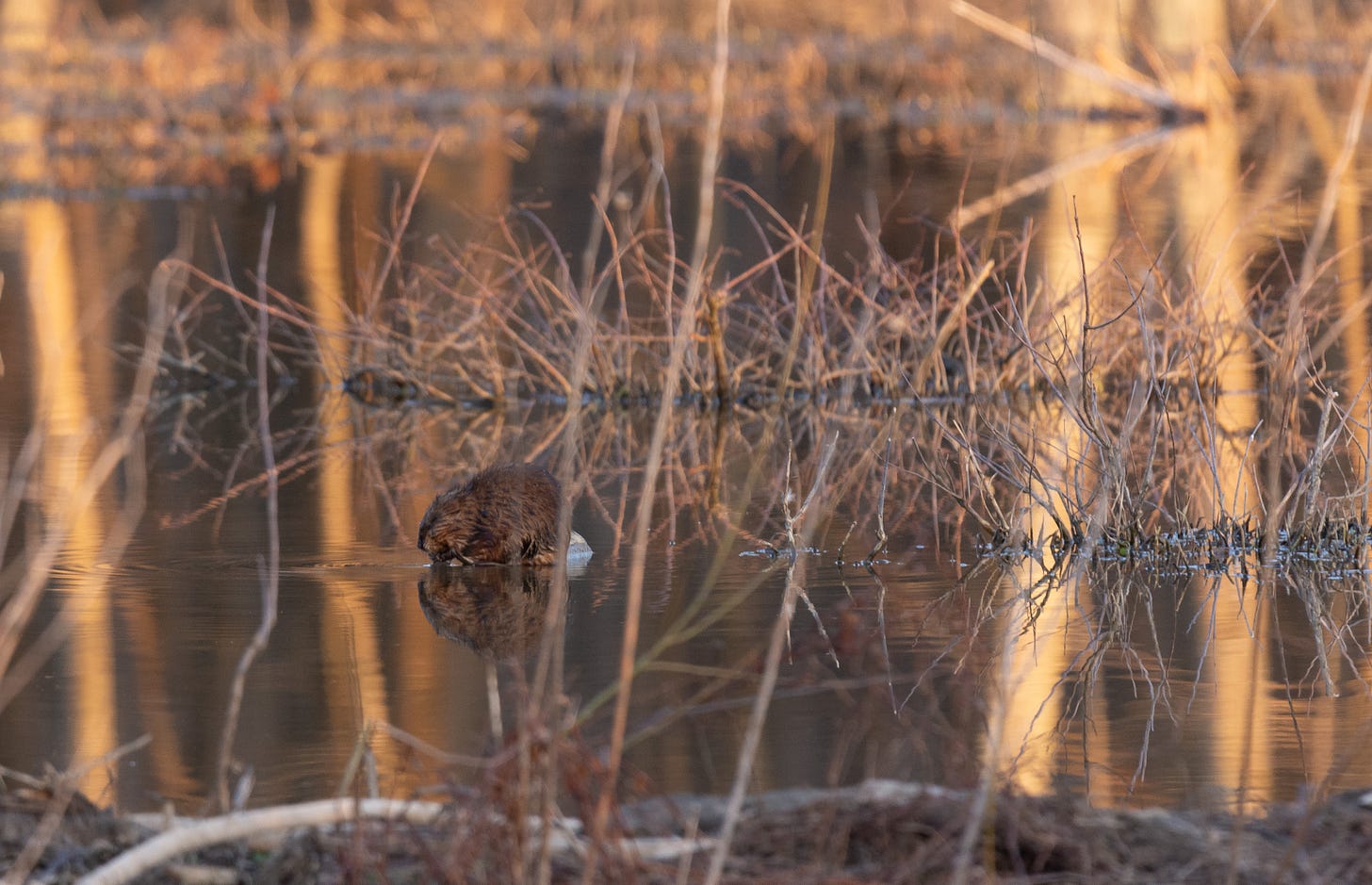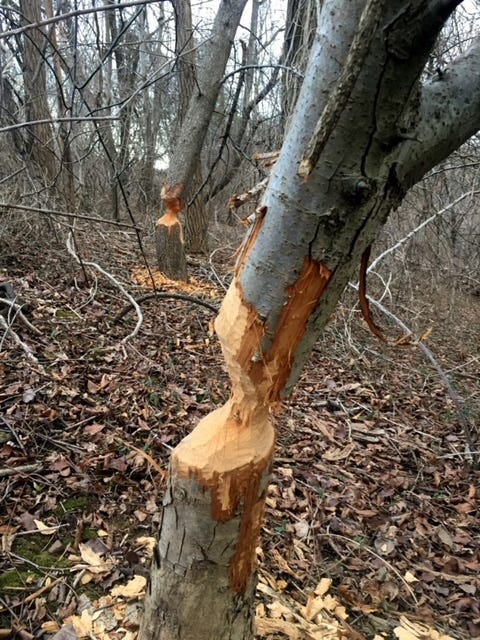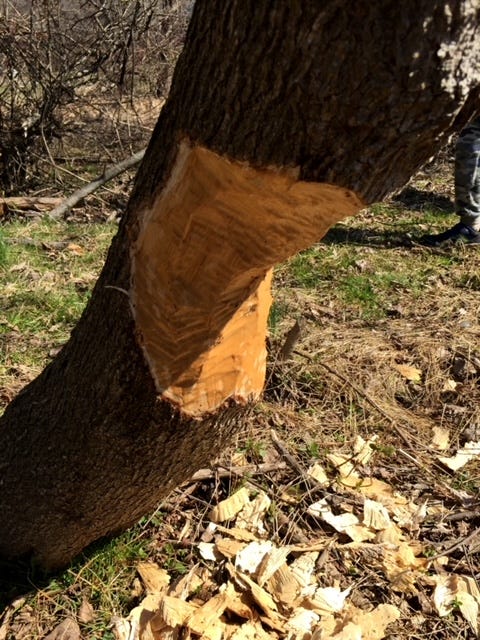In Which I Talk About Beavers
I’ve been thinking a lot about beavers lately.
And let me just say — it’s hard for me to write seriously about beavers. My Dad, once an Eagle Scout, had to quit scouting when the idea of going for a silver beaver award got too funny.
When I was at Huntley Meadows last week, where everyone was preternaturally nice — I mean seriously, I’ve been to dozens of wildlife and nature areas by now, and I’ve never been to a place before where everyone was checking in to make sure everyone else caught a glimpse of the rare bird in the distance or whatever — and my new friend Carrie turned to me and asked me if I got a beaver shot, I had to look away, and then she had to look away. We were both so embarrassed that she ended up showing me where a sora rail lived — a bird so rare, when I tried to enter it in eBird, the system made me write a little note, explaining that I had been with a birder who knew what she was doing when I saw it.
The beaver shot in question. Source: Hannah the WanderFinder.
I guess what I’m saying is that I find beavers irretrievably, irredeemably funny — and yet, they do some serious work.
I was reminded of beavers, not just because I saw one at Huntley Meadows, but also by the pictures of beaver activity that friend and reader, Jennifer Manning, has sent me of beaver activity in the ponds and streams around her home.
Source: Jennifer Manning
I absolutely can’t believe some of these trees are still standing, and I hope that the houses nearby have very good insurance. Jennifer regularly sees beavers in the water, and she’s even seen trees with teeth marks so fresh that there’s still beaver spit present (now, there’s a dirty phrase waiting to happen), but she’s never seen a beaver actually at work. They’re shy about showing off, I guess.
I’m not sure, therefore, how Geronimo might have felt about his lot in life as a parachuting beaver. Apparently, all the suburban sprawl in Idaho post-WWII had begun to affect beaver populations, so in the 1950’s they came up with a very WWII solution to try to re-populate the beavers — they decided to capture beavers in suburbia and parachute them into the backcountry.
Geronimo was the test beaver, and he became so used to being dropped from planes that eventually he would crawl back in his little box himself to wait for the next test drop. When he was finally dropped for the final time into the backcountry, it took him a little while to understand that his lot in life had changed — but perhaps the three young female beavers they dropped in beside him helped to persuade him it was time to start a new way of life.
76 beavers were eventually dropped into the Idaho wilderness, and all but one survived the drop.
I learned about the beaver drop from one of my favorite podcasts, The Wild, as well as much more about beavers and their incredible engineering capacity. They remind me a little of hippos, actually — keystone creatures creating built environments for other creatures to enjoy. Except cuddlier. And cuter. Remind me sometime to tell y’all how I almost got into some serious trouble with some hippos.
And of course, beavers are much, much funnier.
Please keep the reader comments, observations, and photos coming — I love them all! You can email me at info@wanderfinder.com or tweet me @wanderfinder.
Also, I did end up watching the movie The Falconer a couple nights ago and I am even more impressed by Rodney Stotts, his incredible life story and how he uses nature to change the lives of those around him. A really wonderful movie, I highly recommend it.






